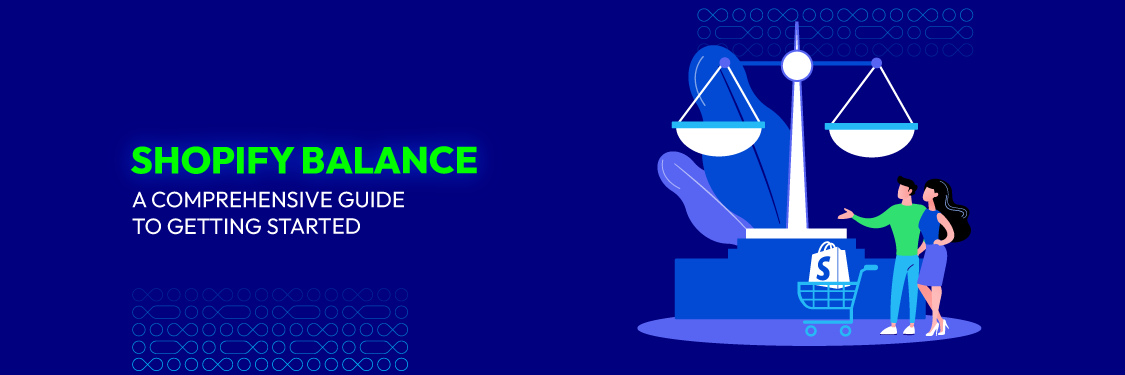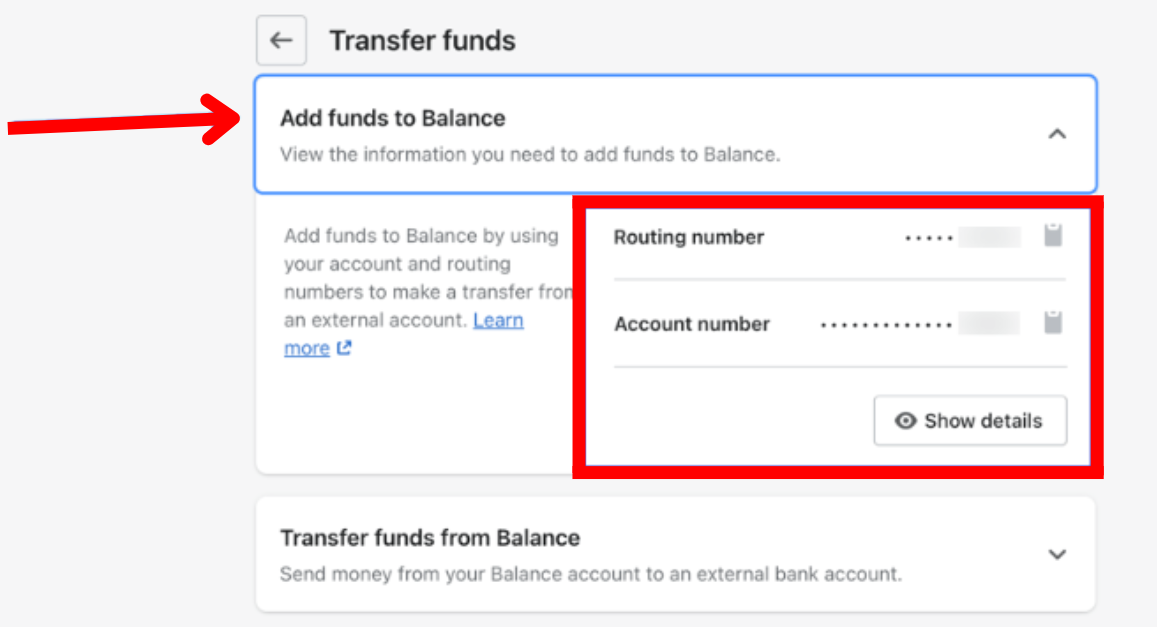Shopify Balance: A Comprehensive Guide To Getting Started
Summer Nguyen | 05-23-2024

Are you a Shopify store owner looking to optimize your financial processes? Curious about how Shopify Balance can revolutionize your business banking experience? Wondering what sets Shopify Balance apart from traditional banking solutions?
Join us as we delve into the details of Shopify Balance, uncovering its key features, benefits, and everything you need to know to get started on the right foot.
What is Shopify Balance?
Shopify Balance serves as a comprehensive financial management and business banking solution provided by Shopify. Seamlessly integrating with your online business, it eliminates monthly fees while facilitating expense tracking, virtual card usage, and access to various banking features.
Effectively marketed as an alternative to traditional banking, Shopify enables online businesses to forego conventional banking processes. With Shopify Balance, merchants can effortlessly accept customer payments and receive transaction funds the following business day, free of extra charges.
This solution synergizes with the Shopify ecommerce platform, streamlining business finances by consolidating checkout building, order management, and Shopify Balance account functions into a unified dashboard. Similar to other Shopify offerings, users can access their Shopify Balance account using the same credentials as their Shopify store login.
Furthermore, Shopify entrepreneurs benefit from a business card devoid of minimum balance requirements, ATM accessibility, and direct linkage to Shopify Capital for potential business funding needs.
Shopify Balance vs Bank Account: Similarities and Differences
Here’s a comparison between Shopify Balance and a traditional bank account, highlighting their similarities and differences:
Similarities:
- Basic banking functions: Both Shopify Balance and a traditional bank account offer basic banking functions such as receiving payments, making withdrawals, paying bills, and managing finances.
- Debit card access: Both typically provide a debit card that can be used for purchases, withdrawals, and other financial transactions.
- No monthly fees (in some cases): Depending on the bank and the specific account type, both options may offer no monthly fees.
- Transaction tracking: Both platforms allow users to track their transactions, albeit with potentially different interfaces and features.
Differences:
- Integration with e-commerce platform: Shopify Balance is tightly integrated with the Shopify platform, providing seamless synchronization of financial data with e-commerce sales and other business metrics. Traditional bank accounts do not offer this level of integration with e-commerce platforms.
- Target audience: Shopify Balance is specifically tailored for merchants and businesses using the Shopify platform, whereas traditional bank accounts cater to a broader range of individuals and businesses.
- Specialized features: Shopify Balance may offer specialized features geared towards e-commerce businesses, such as easy access to customer payments, integration with Shopify Capital for funding, and streamlined order management. Traditional bank accounts may offer a different set of specialized features, such as investment options, business loans, or mortgage services.
- Accessibility: While traditional bank accounts may have physical branches and ATMs for in-person banking, Shopify Balance operates entirely online and may not offer physical banking locations or ATM access.

- Funding sources: Traditional bank accounts typically accept deposits from various sources, including payroll, transfers, and cash deposits. Shopify Balance primarily receives funds from sales made through the Shopify platform.
Read more: Top 13 Ecommerce Bank Accounts Tailored for B2B Businesses
Pros and Cons of Shopify Balance
Pros of Shopify Balance
- Integration with Shopify: Shopify Balance seamlessly integrates with the Shopify platform, allowing merchants to manage their finances alongside their online store operations. This integration provides a unified dashboard for tracking sales, expenses, and financial data.
- Simplified financial management: Shopify Balance simplifies financial management for merchants by offering tools for tracking expenses, receiving payments, and managing cash flow. This could potentially streamline operations and alleviate the administrative overhead linked to overseeing numerous accounts.
- No monthly fees: In many cases, Shopify Balance doesn’t impose monthly fees, presenting a cost-efficient choice for merchants compared to traditional business banking accounts that may have monthly maintenance fees.
- Quick access to funds: Merchants can receive payments from Shopify sales the next business day with Shopify Balance, without incurring additional fees. This fast access to funds can help improve cash flow and liquidity for businesses.
- Specialized features: Shopify Balance offers specialized features tailored to e-commerce businesses, such as the ability to access Shopify Capital for business funding and easy integration with Shopify Payments for payment processing.
Cons of Shopify Balance
- Limited to Shopify users: Shopify Balance is only available to merchants using the Shopify platform. If you’re not using Shopify for your online store, you won’t be able to access Shopify Balance.
- Limited banking services: While Shopify Balance offers basic banking services, it may not provide the full range of services offered by traditional banks, such as investment options, business loans, or mortgage services.
- Lack of physical locations: Shopify Balance operates entirely online, which means it may not have physical banking locations or ATMs for in-person banking services. This could be a drawback for merchants who prefer in-person banking experiences.
- Dependence on Shopify’s ecosystem: Since Shopify Balance is closely tied to the Shopify platform, any disruptions or issues with Shopify’s services could potentially impact the availability or functionality of Shopify Balance.
- Potential integration issues: While the integration with Shopify can be a benefit, it may also lead to complexities or issues if there are compatibility issues or changes to either the Shopify platform or Shopify Balance itself.
Key Features of Shopify Balance
The key features of Shopify Balance include:
- Dedicated business banking account: Shopify Balance provides merchants with a dedicated business banking account tailored specifically to their needs. This account serves as a centralized hub for managing financial transactions, receiving payments, and handling expenses associated with their Shopify store.
- Fee-free banking: One of the standout features of Shopify Balance is its absence of monthly fees. Unlike many traditional banking solutions, Shopify Balance offers a cost-effective option for merchants, eliminating the burden of recurring fees that can eat into profits.
- Integrated debit card: Merchants gain access to a debit card linked directly to their Shopify Balance account. This card empowers them to make purchases, withdraw cash, and conduct financial transactions conveniently, whether online or in-person, leveraging the funds in their Shopify Balance account.
- Expedited fund access: With Shopify Balance, merchants can enjoy accelerated access to their funds. Payments from Shopify sales can be deposited into their Shopify Balance account as quickly as the next business day, facilitating improved cash flow management and liquidity.
- Seamless integration with Shopify platform: Shopify Balance seamlessly integrates with the broader Shopify ecosystem. This integration allows merchants to consolidate financial management tasks with their online store operations, providing a unified dashboard for overseeing both aspects of their business efficiently.
- Robust expense tracking tools: Shopify Balance offers robust tools for tracking expenses, enabling merchants to monitor their spending patterns, categorize expenses, and maintain better control over their budgets. This feature enhances financial visibility and empowers informed decision-making.
- Access to Shopify capital: Merchants utilizing Shopify Balance may gain access to Shopify Capital, a funding solution designed to support business growth and expansion. This access to capital can provide merchants with the financial resources they need to invest in inventory, marketing initiatives, or other strategic endeavors.
- ATM accessibility: Depending on the specific features offered, Shopify Balance may provide merchants with access to ATMs for cash withdrawals using their Shopify Balance debit card. This accessibility ensures convenience and flexibility in accessing funds whenever needed.
- Comprehensive financial reporting: Shopify Balance offers comprehensive reporting features that enable merchants to gain insights into their financial performance. Merchants can make data-driven decisions to optimize their business operations.
- Enhanced security measures: Shopify prioritizes the security of its merchants’ financial information and transactions. Shopify Balance incorporates robust security measures to safeguard sensitive data, providing merchants with peace of mind and confidence in their financial transactions.
Requirements to Open a Shopify Balance Account
To open a Shopify Balance account, merchants typically need to fulfill certain requirements. Here are the general prerequisites often needed:
- Your Shopify store must operate within the United States.
- You must possess a valid US Social Security number, which should be saved in your Shopify dashboard during Shopify Payments setup.
- Provide a mobile phone number and store it in your Shopify account details. This number is essential for receiving necessary text messages.
- Activate Shopify Payments within your dashboard to proceed with the account setup.
How to Set Up Shopify Balance
When setting up your Shopify Balance account, you’ll encounter two options on the Shopify Balance homepage:
- If you’re new to Shopify, begin by initiating a free trial and creating a store. You’ll need to establish a Shopify account and launch a store before gaining access to Shopify Balance.
- If you’re already a Shopify user, simply log into your existing account to set up Shopify Balance.

After launching your store or logging into your account, navigate to Finances > Balance.

Next, select “Open account,” which directs you to the Shopify Balance Account Setup section.

To understand how Shopify Balance operates, select the “Getting Started” tab, then proceed by clicking the “Continue” button.

In the “Verify Your Information” tab, review it for accuracy before proceeding. If any information needs correction, simply click on the Edit (Pencil) icon to make adjustments. Once confirmed, click the Verify button.

Next, proceed to the “Enter Your Social Security Number” tab. Input your social security number into the designated field and click Confirm.
Finally, in the “Agree to Terms” section, ensure to check the box to agree to all Shopify Balance Account and Card agreements.
Select the “Complete Account Setup” button to finalize the process.

To fully utilize Shopify Balance management module, you must configure two-step authentication for enhanced security. Select the “Set Up Two-Step Authentication” button to continue.

After logging into your account once more, click the “Turn On Two-Step” button to activate this additional security measure.

Choose from the following two-step authentication options:
- Utilize a security key or biometrics.
- Employ an authenticator app such as Google Authenticator (recommended for its simplicity and enhanced security compared to SMS authentication).
- Opt for SMS delivery if you prefer or are unfamiliar with authenticator apps (although learning to use them is straightforward and advisable).
Select your preferred authentication method and click the “Turn On” button.

It’s worth noting that authentication apps typically store login codes on a specific device, meaning losing access to that device could potentially lock you out of your account. To mitigate this risk, Shopify offers additional recovery codes that can be used to unlock your account in such situations. Be sure to print, copy, or download these codes as a precautionary measure.
How to Manage Your Shopify Balance Account
Navigate to Finances > Balance.
Click on “Manage Account.”

On the Shopify Balance Account page, you’ll find your routing number and account number, initially hidden until you click “Show Details.” You can copy and paste these details for various purposes, such as money transfers, using the provided Copy icon buttons next to each number.
Choose the “View Statements” button to access a list of recent transactions for review on the Shopify dashboard. Additionally, you’ll find options to download multiple statements to your computer directly from the page.

Scroll down to the Card Management section to access information about your virtual Shopify Balance card. While a virtual card is automatically provided with every Shopify Balance account, you can request a physical card by selecting the “Order A Physical Card” button, which can be used for in-person transactions at physical stores.
Additionally, the Card Management section allows you to view cardholder details. Select the “View Cardholder Details” button to adjust account information or utilize it for transfer purposes.
Sending and Receiving Funds with Your Shopify Balance Account
To initiate funds transfers to or from your Balance account, follow these steps:
- Navigate to Finances > Balance.
- Click on “Move Money.”
Move Money
- Access the “Add Funds To Balance” tab. Here, you’ll find the routing and account numbers. Click “Show Details” to reveal the full numbers and copy them as needed.

- Access the dashboard of the account you’re transferring from, such as Chase or Bank of America.
- Utilize your bank’s transfer tools to input the routing and Shopify Balance account number and complete the transfer.
Alternatively, to transfer funds from your Shopify Balance account to another destination, like a third-party savings or checking account:
- Access the “Transfer Funds From Balance” tab.
- Select your From Account (the Shopify Balance account).
- Click “Add An Account” to input the routing and account details of your third-party bank into the To Account field.

- Specify the transfer amount in the Amount field and provide a description for reference purposes.
- Proceed by clicking the “Next” button to complete the transfer.
Receiving Online Store Payouts to Your Shopify Balance Account
Configuring Shopify for automatic payout transfers to the new Shopify Balance account is unnecessary. Since Shopify Payments is a prerequisite for Shopify Balance, Shopify automatically designates Shopify Balance as your default payout account.
Payouts are deposited into the account as swiftly as one business day, allowing you to access the funds, transfer them to another account, or utilize them with the Shopify Balance card.
However, it’s important to note an exception to the standard 1-day payout timeframe: Shop Pay installment transactions, where customers opt to pay later through a payment plan, may take up to three business days to process. This exception applies only if you activate Shop Pay on your store and if customers utilize this payment option.
Read more: How to Use Shop Cash on Shopify: An Easy Guide
Conclusion
With Shopify Balance, managing your e-commerce finances has never been easier. By harnessing its streamlined features and seamless integration with your Shopify store, you can gain greater control and insight into your business’s financial health. From simplified banking to expedited fund access, Shopify Balance provides a variety of advantages that can propel your online business to new heights.
Begin your journey to streamline your financial management today and discover the convenience and efficiency of Shopify Balance. Start your journey now and watch your e-commerce business thrive.






![Top 20+ Must-have Shopify Apps for 2025 [Free & Paid] - Mageplaza](https://cdn2.mageplaza.com/media/blog/must-have-shopify-apps/top-must-have-shopify-apps.png)
![[2025 Updates] Top 10+ Upsell Apps for Shopify - Mageplaza](https://cdn2.mageplaza.com/media/blog/best-upsell-shopify-app/cover.png)